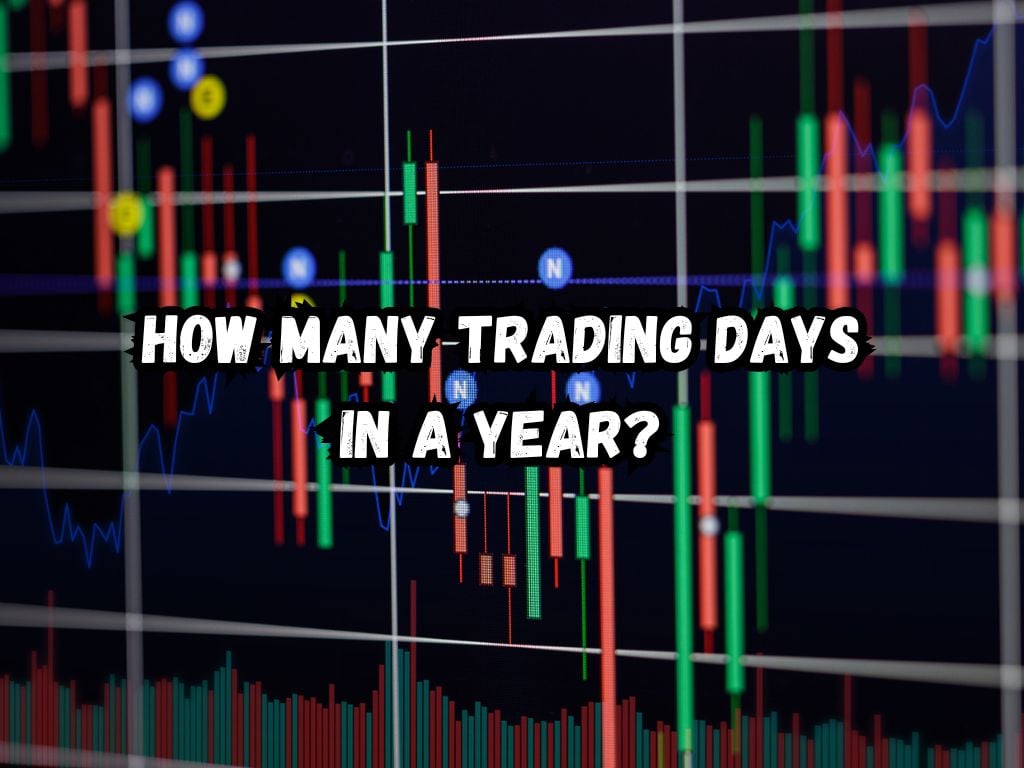Investors and traders plan their strategies based on a host of different factors. One key element often overlooked is how many trading days in a year.
This figure shapes investor approaches, trading moves, and long-term financial planning.
Understanding Trading Days
A trading day refers to any day when the stock market is open for business. Major global markets, such as the New York Stock Exchange (NYSE) or the NASDAQ, don’t operate on weekends and are closed for public holidays, which varies from one country to another.
Thus, while the NYSE and NASDAQ have specific schedules, other markets such as the London Stock Exchange (LSE) or the Tokyo Stock Exchange (TSE) may differ slightly in the number of trading days they offer.
How Many Trading Days In A Year?
The standard practice for U.S. markets is generally about 252 trading days a year. This figure takes into account the weekends and public holidays when the markets are traditionally closed.
Certain special events, such as severe weather conditions or national periods of mourning, can also lead to unexpected market closures.

Impact on Trading and Investment Strategies
The number of trading days can affect trading volumes. Earnings seasons, for example, are periods of heightened trading activity that traders look out for.
Similarly, the days leading up to holidays often see changes in market liquidity and volatility. In the last months of the year, many traders are looking to balance their books before the year’s end, leading to increased activity.
Investment strategies, especially those that are long-term, must consider the density of trading days in specific periods to optimize entry and exit points.
How to Maximize Trading Days
Traders do best when they are strategic about trading days. Understanding how holiday periods could reduce the liquidity or how global events might lead to an increase in volatility is crucial in preparing for the year ahead.
Long-term investors, as well, need to factor in the trading calendar when determining the timing for their investments.
Global Market Comparison
When looking at trading days worldwide, significant variations arise due to regional holidays and stock exchange practices. In North America, major exchanges such as the NYSE and NASDAQ typically operate for about 252 days a year.
European markets, like the London Stock Exchange, have a slightly different schedule due to differing public holidays and can have around 255 trading days annually.
In Asia, the number of trading days can fluctuate more considerably; for instance, the Tokyo Stock Exchange (TSE) has approximately 248 days, affected by Japan’s unique national holidays.
These differences have practical implications for international investors who must navigate a patchwork of trading calendars.
Regional exchanges are also shaped by local customs and religious observances, such as Diwali in India, which may lead to shorter trading hours or complete closures.
This patchwork schedule creates a diverse tapestry of operational days that global traders must monitor to align their strategies across various markets.

The Role of Electronic Trading
The emergence of electronic and after-hours trading has fundamentally altered the traditional concept of a trading day, extending the possibility of market transactions far beyond the conventional hours maintained by physical stock exchanges.
While the official count of trading days per year remains constant, the actual scope for trading activities has expanded. Investors can now execute trades almost 24/7 in response to global events and news, thereby blurring the lines between distinct trading days.
Although this revolution in trading access doesn’t change the formal calendar of market operations, it profoundly widens the window for market participation and strategy implementation, making the market more fluid and accessible.
Tools and Resources
Various tools and resources are available to traders. From detailed trading calendars to sophisticated alert systems, these tools offer investors and traders a way to stay informed about when they can trade.
FAQs
How has electronic trading changed the stock market?
Electronic trading has made the market more accessible, allowing for 24/7 trading and providing traders with the ability to react instantly to global events.
Does electronic trading affect the number of trading days?
While electronic trading doesn’t officially increase the number of trading days, it extends trading opportunities beyond traditional market hours.
Can I trade stocks anytime due to electronic trading?
Yes, electronic and after-hours trading allows for transactions outside the standard trading hours, although liquidity may vary.
Are all stocks available for electronic trading after hours?
Not all stocks are available for after-hours trading. Availability can depend on the specific exchange and market demand.
Is electronic trading riskier than traditional trading?
Electronic trading can carry additional risks such as lower liquidity and higher volatility, especially outside of regular trading hours.
Conclusion
Understanding the number of trading days in a year is a tool that traders and investors can leverage to sharpen their strategies. This knowledge aids in preparing for market ebbs and flows, ultimately fostering more informed and potentially profitable trading decisions.


 Tags:
Tags:










